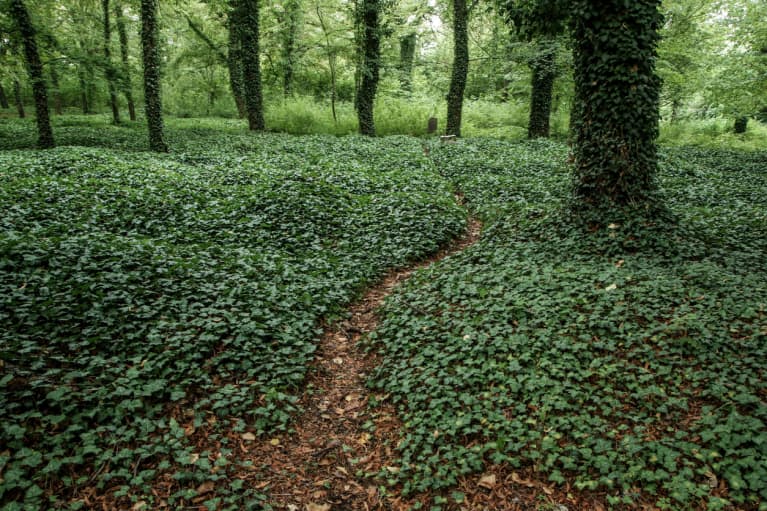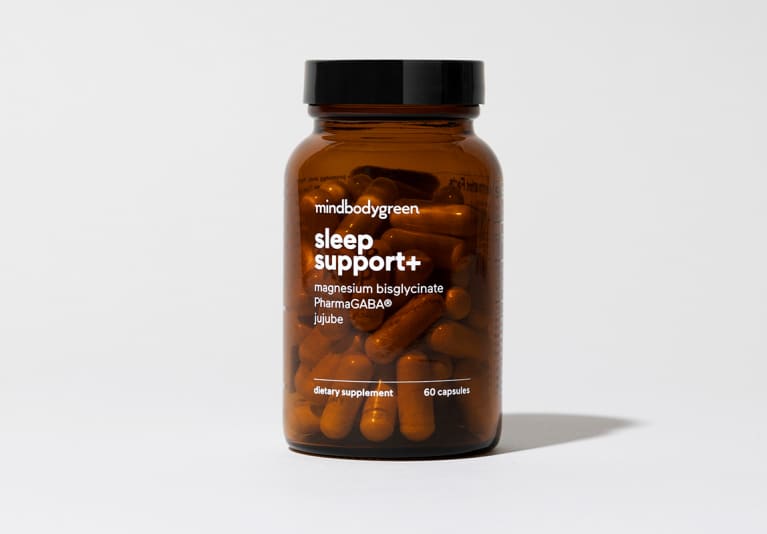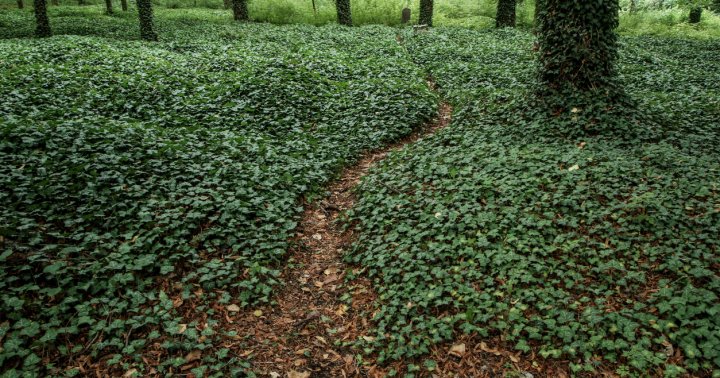
Our editors have independently chosen the products listed on this page. If you purchase something mentioned in this article, we may earn a small commission.
August 2, 2022 — 22:03 PM
In life, opportunities to talk about death are few and far between. As such, most of us don’t give much thought to how our bodies will be treated after we pass away—and we may not even know that we have a choice in the matter.
The green burial movement seeks to change that through a more ecological, intentional, and community-minded approach to death and dying. Here’s what green burial scholars and practitioners have to say about the method’s benefits, logistics, and potential to redefine death care.
What does it mean to have a ‘green burial’?
In conventional burials, bodies are typically embalmed before being placed in a vault or casket made from concrete and/or metal. Green burials, or natural burials, forego chemical embalming and bury bodies in natural and biodegradable materials such as a cotton shroud or pine casket.
This burial alternative has a lower environmental impact and it allows the body to quite literally return to the earth. It also tends to be more affordable than conventional burials.
Green burials are becoming increasingly popular across the U.S. According to a 2022 report by the National Funeral Directors Association, 60.5% of those polled would be interested in exploring a green funeral; up from 55.7% in 2021. And over the past two years, Edward Bixby, the president of The Green Burial Council (GBC), which advocates for environmentally sustainable death care, says he’s noticed the surge of interest in green burials firsthand.
The COVID pandemic and the ongoing climate crisis have forced us to reckon with the inevitability of death and the value of a purpose-driven life. During such a fraught time, it makes sense that people are putting more thought into the impact of the last decision they’ll make on Earth.
Funeral homes and providers are quickly responding to the increased demand, and the GBC saw a 21% increase in green burial cemeteries in the U.S. and Canada in 2021.
Variations of a green burial.
Not all cemeteries offer green burial services. If you’re interested in having a green burial for yourself or a loved one, you’ll need to look for one that falls into one of the following buckets:
- Hybrid cemeteries: These cemeteries offer conventional burials (with embalming, vaults, etc.) but also have a section that is designated for green burials.
- Natural burial cemeteries: These cemeteries only offer green burial services.
- Conservation burial grounds: These look more like pristine public parks than cemeteries. Owned by conservation agencies, they are protected under strict conservation easements. This means that not only do they only offer green burial services, but they also forego tombstones and anything else that might disrupt the natural landscape.
Why someone may want a green burial.
Beyond the more obvious environmental perks, there are a number of reasons to consider a green burial for yourself or a loved one.
1. It’s better for the planet.
sleep support+
Is great sleep in the stars for you tonight?*

Between the millions of gallons of embalming chemicals and tons of carbon emitted to create burial chambers every year, the conventional funeral industry has a pretty hefty footprint. While cremation is considered a more eco-friendly option, it comes with emissions of its own. Flame cremations are equivalent to driving about 700 miles in terms of their carbon emissions, and they also produce pollutants such as dioxin and mercury.
Green burials forego these emissions and in some cases allow bodies to actually restore and regenerate the land around them.
2. It speaks to your values.
Seth Viddal, a managing partner at The Natural Funeral in Lafayette, Colorado, which facilitates green burials as well as other holistic forms of death care, notes that many clients choose these services because they align with the way the deceased lived their life. “If they were an activist, a protestor, or they composted in the backyard, why would I make their last act be an act of pollution?,” is common reasoning for choosing a green burial, Viddal says.
3. It aligns with your religious or cultural beliefs.
It’s worth noting that while the term “green burial” is relatively new, it’s been the norm throughout most of human history. It wasn’t until the 19th century that vaults or chemical embalmings were popularized in the U.S.—and some faith traditions still do not use them. Orthodox Jewish cemeteries bury the deceased in biodegradable pine boxes, for example, while Muslim burials use the Kafan, a plain cloth or shroud.
4. It can allow for more family involvement.
When Mallory McDuff, Ph.D., professor and author of Our Last Best Act: Planning for the End of Our Lives to Protect the People and Places We Love, organized a natural burial for her father at his request in 2005, the experience showed her that we all have more agency in death transitions than we may realize.
“What it allows beyond conservation is a real reckoning with death, and an engagement of the family and friends that is still feeding me all these years later,” McDuff tells mbg.
Though every green burial facility is a little different, many of them try to actively involve family members in each ceremony—be it by allowing them to keep their loved one at home for a day or two following their passing, or by letting them bury the deceased in a favorite natural garment.
“It gives people the power of not having to turn over an intimate and very sacred, meaningful act,” says Viddal. “We find that when families embrace that possibility, they are able to experience the sparks of acceptance, surrender, and healing.”
Arranging a green burial.
The process of arranging a green burial is similar to setting up a conventional burial, though it may require a bit more research upfront.
The easiest way to find a green burial provider in your area is to check the interactive maps on the Green Burial Council’s website. These will show you the nearly 400 hybrid, natural, and conservation burial sites that have been certified by their certification program. And just because you don’t see a provider near you, that doesn’t mean they don’t exist.
A cemetery that doesn’t advertise that it offers green burial may still allow you to do a burial without embalming or a vault, so it’s worth asking about. As green burial techniques gain more attention, Bixby estimates that most people in the U.S. will be able to find a site that will accommodate a natural burial within 100 miles.
Once you find a cemetery or funeral provider, you can work with them to find a biodegradable casket or burial shroud. They may have options that they offer or allow you to provide your own. The Green Burial Council also certifies a number of biodegradable funeral products, from pure wood caskets to cotton shrouds.
Depending on which state you live in, you can also explore other approaches to holistic, sustainable death care like water cremation and human composting. (More details on those below.)
And it’s never too early to think about what you’d like your own end-of-life care to look like, too. Nonprofits like End Well and Death Over Dinner provide helpful resources for starting conversations about death that are meaningful and ultimately life-affirming.
“We’re in a world where life has to involve talking about death and dying,” says McDuff. “The more we talk about it, the easier it is for the people who are living to manage and handle and engage with death.”
Other sustainable alternatives.
Having a green burial is just one way to allow your body to more seamlessly return to the earth once you pass away. Here are a few other approaches to death care that are less common but just as deliberate and sustainable:
- Aquamation (alkaline hydrolysis): This form of cremation uses water and lye instead of flames to break down the body. It’s less carbon intensive than flame cremation and still results in cremains that the family can keep, scatter, or bury. The water used in the process is usually recycled through wastewater treatment facilities. It is currently legal in 20 states.
- Human composting (natural reduction): Human composting turns the body into soil. “It’s a new but wildly ecological process that uses almost no energy,” says Viddal, who started offering it in 2021. In this process, the body is placed in a vessel surrounded by materials like woodchips, straw, and alfalfa. Then, microbes go to work to break down the body into nutrient-rich soil through a process that is carefully monitored for a few months. Human composting is currently legal in four states (Colorado, Oregon, Washington, and Vermont) but The Natural Funeral and Recompose in Washington are some of the only places to offer it.
- Memorial reefs: Memorial reefs place cremated remains into a synthetic reef that is dropped to the bottom of the ocean and left to attract underwater life. There are dozens of memorial reef sites across the U.S., and you can learn more about them here.
- Memorial trees: In this process, cremated remains are mixed into soil that sits at the base of a tree, allowing them to feed a living forest. Memorial tree sites like Better Place Forests, with locations across the U.S., then use GPS to mark each tree with the deceased’s name.
FAQ.
Does scattering ashes count as green burial?
No, as green burial technically entails burying the body in biodegradable material before laying it in the ground. However, that doesn’t mean there’s anything wrong with returning ashes to the earth—be it through scattering them, burying them, or placing them in a memorial tree or reef.
Are green burials legal?
Yes, green burials are legal in all 50 states. There is no law that says bodies need to be embalmed or buried in a vault. However, some cemeteries may have rules in their contract that require cement vaults or grave liners.
How much does a green burial cost?
It depends, but they typically cost more than a flame cremation and less than conventional burial. Bixby notes that while some plots can be very expensive depending on location, most green burials cost around $6,000; around half the national average for a conventional burial and funeral.
While death is ultimately out of our hands, the way we are laid to rest is within our control. Green burial and emerging techniques like aquamation and human composting allow for a more seamless transition back to the earth, so it’s no wonder they’re increasingly popular with those who consider sustainability and conservation their life’s work.
Reset Your Gut
Sign up for our FREE doctor-approved gut health guide featuring shopping lists, recipes, and tips
You are now subscribed
Be on the lookout for a welcome email in your inbox!
https://www.mindbodygreen.com/articles/green-burial

